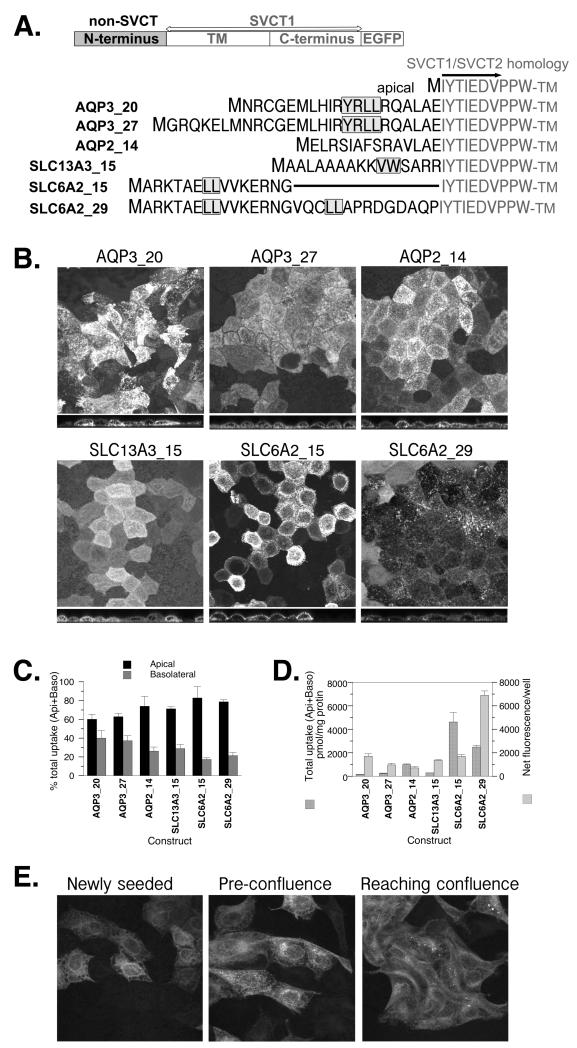FIGURE 5.
The effects of N-terminal sequences from other multipass membrane proteins, AQP3, AQP2, SLC13A3 and SLC6A2, on the localization of SVCT1 in well-differentiated MDCK cells. (A) Schematic and sequence presentation of heterologous chimeras containing N-terminal sequence from the protein indicated linking to SVCT1 sequence without any SVCT1-specific N-terminal sequence. Numbers after the protein names represent the length of N-terminus included in the chimera. AQP3_20 had residues 9-28 of AQP3 inserted while AQP3_27 had the entire AQP3 N-terminus. AQP2_14 had residues 3-16 of the 15 unique residues in the AQP2 N-terminus inserted. SLC13A3_15 had all 15 unique residues of SLC13A3 N-terminus inserted. Wildtype SLC6A2 has 61 residues in the N terminus after the initiating methionine. SLC6A2_15 had residues 27-41 inserted and SLC6A2_29 had residues 27-55 inserted. Shaded amino acid residues represent residues previously shown to be critical for the basolateral targeting of parental protein (6-8). (B) Representative confocal merged XY and YZ images of MDCK cells stably expressing each construct. (C) The proportion of ascorbate uptake across the apical (Api) and basolateral (Baso) membrane of MDCK cells stably expressing each construct and grown on Transwells. (D) The efficiency with which each construct was incorporated into the cell membrane. (C,D) Data shown are means±SD of triplicate wells. Some error bars are too small to be visible. (E) The localization of SLC13A3_15 in subconfluent MDCK cells.

